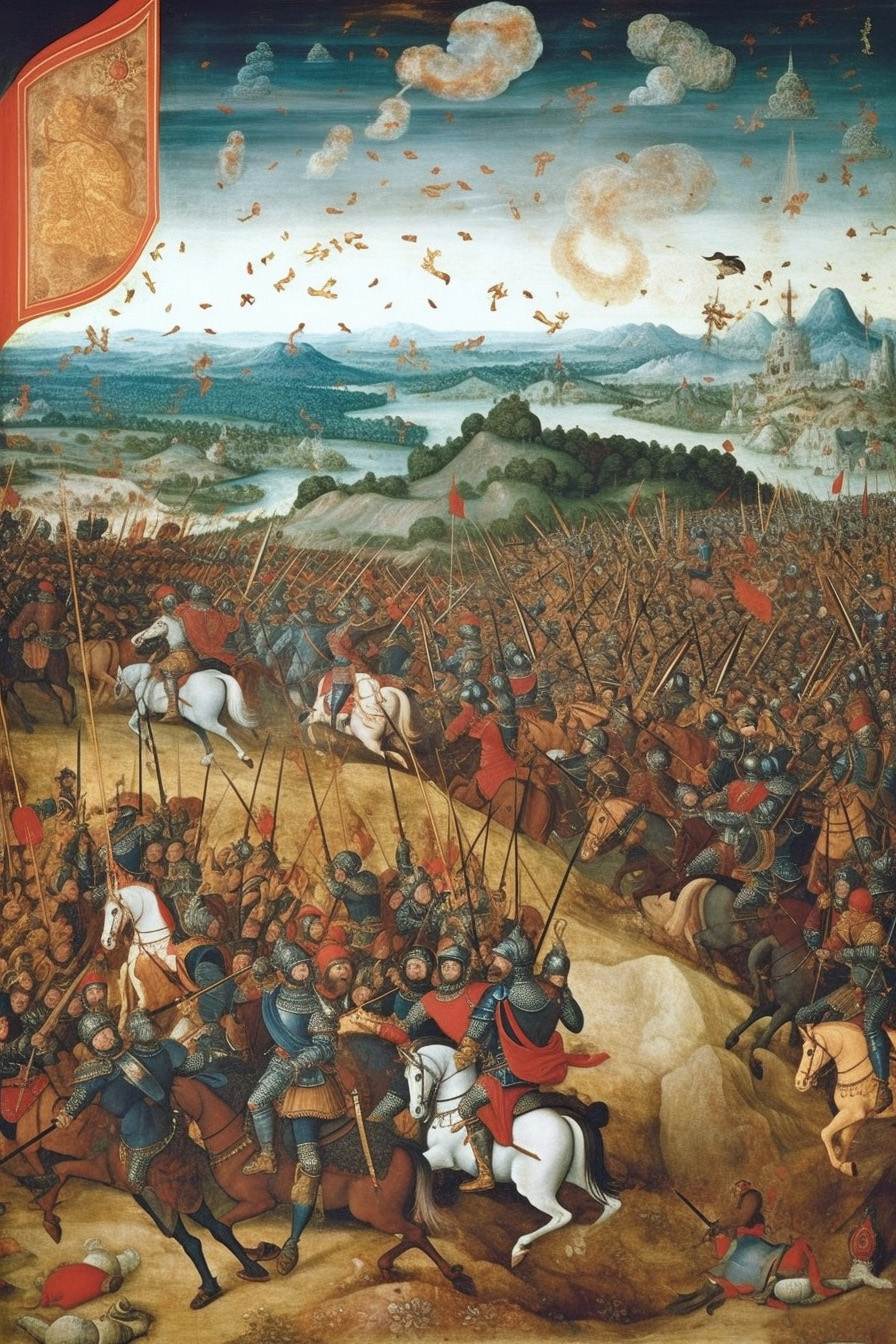
Original Artwork Digital Mix Ai
The Battle of Alexander at Issus Digital Art AI
The Battle of Issus was fought between the armies of Alexander the Great of Macedon and the Persian King Darius III in 333 BC. It was a pivotal battle in Alexander’s campaign to conquer the Persian Empire and secure his place in history as one of the greatest military commanders of all time.
Background:
Alexander had begun his conquest of Persia in 334 BC, crossing the Hellespont with an army of 35,000 men. His first major battle was at the Granicus River, where he defeated a Persian force led by the satrap of Phrygia. Alexander then marched south along the Aegean coast, capturing cities and securing his supply lines.
Darius, meanwhile, had been gathering his forces and preparing for a decisive battle. He had an army of up to 100,000 men, including the famous Persian Immortals, and he hoped to crush Alexander’s army before it could gain momentum.
The Battle:

The two armies met near the town of Issus, in what is now modern-day Turkey. Darius had chosen a narrow plain between the sea and the mountains, which would limit Alexander’s ability to maneuver his cavalry. He also had the advantage of a larger army, and he believed that he could overwhelm Alexander’s forces with sheer numbers.
Alexander, however, was a master of tactics and he knew how to turn his opponent’s advantages against them. He ordered his cavalry to attack the Persian left flank, which was weaker than the center or right. This caused the Persians to shift their forces to the left, leaving their center vulnerable.
Alexander then launched a fierce attack on the Persian center, breaking through their lines and engaging Darius in hand-to-hand combat. Darius fled the battlefield, leaving his army to be decimated by Alexander’s forces.
Aftermath:
The Battle of Issus was a resounding victory for Alexander and a crushing defeat for Darius. Alexander captured Darius’ wife, mother, and children, along with a vast amount of treasure. He had secured his place as the undisputed leader of the Greek world and as a conqueror of one of the greatest empires in history.
The battle also marked a turning point in the campaign, as Alexander was able to push further into Persia and secure his hold on the region. He went on to capture major cities such as Babylon, Susa, and Persepolis, consolidating his power and establishing a new empire.
Legacy:
The Battle of Issus is remembered as one of the greatest military victories in history, and it cemented Alexander’s reputation as a brilliant strategist and tactician. It also marked the beginning of a new era in world history, as Greek culture and ideas began to spread throughout the Near East and beyond.
The battle has been depicted in art and literature for centuries, including famous works by artists such as Albrecht Altdorfer and Jan Brueghel the Elder. It has also been referenced in popular culture, such as in the film “Alexander” (2004) starring Colin Farrell.
The Battle of Issus was a pivotal moment in the history of the ancient world, and it established Alexander as one of the greatest military leaders of all time. His victory over Darius and the Persians set the stage for his conquest of the Near East and the spread of Greek culture throughout the region. It remains a fascinating and inspiring story of courage, strategy, and determination, and it continues to captivate people’s imaginations to this day.






